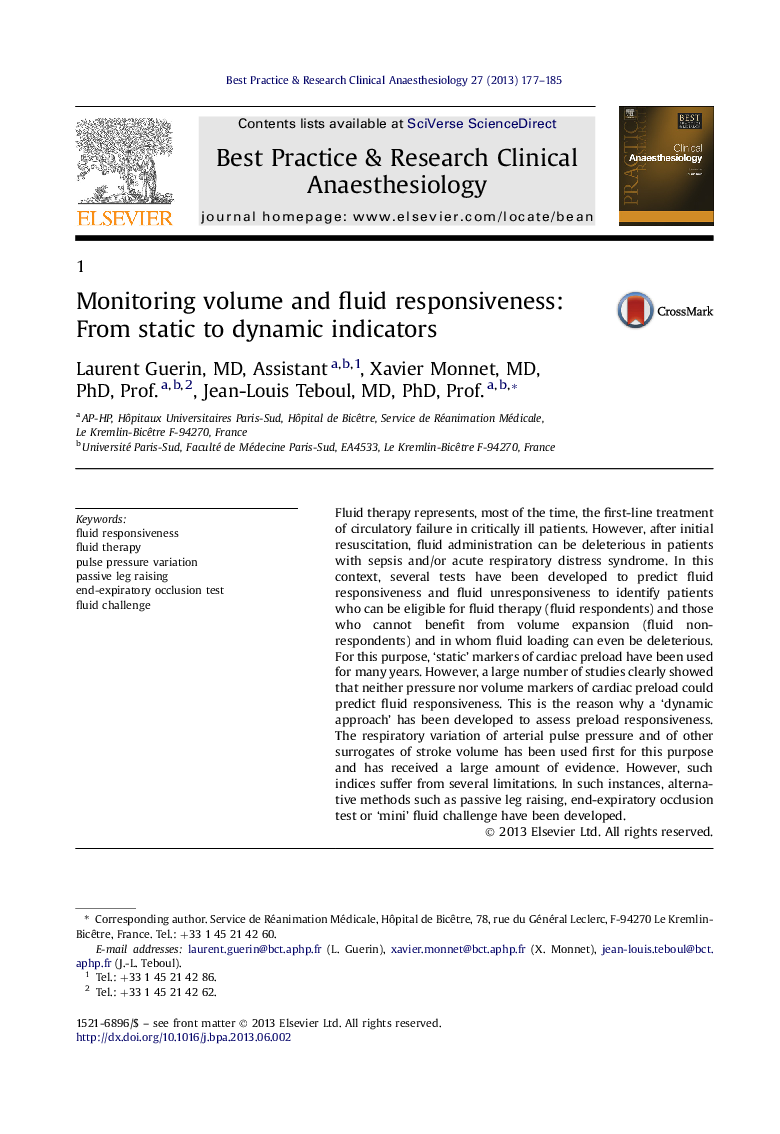| Article ID | Journal | Published Year | Pages | File Type |
|---|---|---|---|---|
| 2748576 | Best Practice & Research Clinical Anaesthesiology | 2013 | 9 Pages |
Fluid therapy represents, most of the time, the first-line treatment of circulatory failure in critically ill patients. However, after initial resuscitation, fluid administration can be deleterious in patients with sepsis and/or acute respiratory distress syndrome. In this context, several tests have been developed to predict fluid responsiveness and fluid unresponsiveness to identify patients who can be eligible for fluid therapy (fluid respondents) and those who cannot benefit from volume expansion (fluid non-respondents) and in whom fluid loading can even be deleterious. For this purpose, ‘static’ markers of cardiac preload have been used for many years. However, a large number of studies clearly showed that neither pressure nor volume markers of cardiac preload could predict fluid responsiveness. This is the reason why a ‘dynamic approach’ has been developed to assess preload responsiveness. The respiratory variation of arterial pulse pressure and of other surrogates of stroke volume has been used first for this purpose and has received a large amount of evidence. However, such indices suffer from several limitations. In such instances, alternative methods such as passive leg raising, end-expiratory occlusion test or ‘mini’ fluid challenge have been developed.
